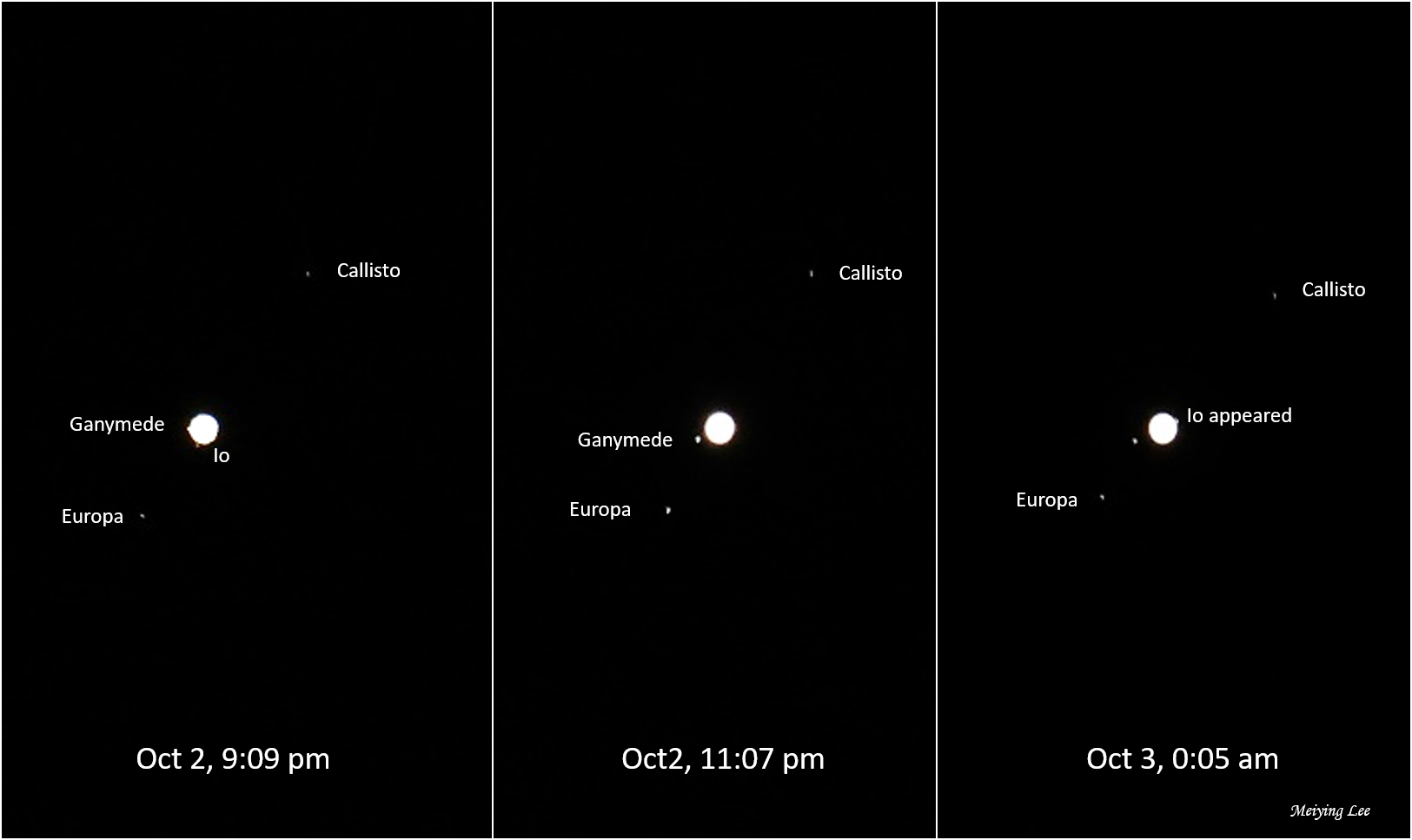EarthSky Community Photos
Submit your photo here. Comment or upvote on photo pages. Search via photographers' names. More improvements coming! To help, please donate.

Taipei, Taiwan
09:09 pm
Canon R7 + SIGMA 60-600mm F4.5-6.3 S DG OS HSM Sports
Use PowerPoint to put three photos together for comparison.
I always thought that to see obvious changes in the four major satellites of Jupiter, the Galilean satellites, it would take several nights of continuous observation. Later I discovered that the Galilean satellites move very fast around Jupiter. If we have the opportunity to observe, we can see the obvious movement of the Galilean satellites in one night. At about 9 pm on October 2, I discovered that there were only two Galileo satellites left - Europa and Callisto (picture on the left). After taking a closer look, I discovered that there are two satellites "glued" to the lower and left sides of Jupiter, namely Io and Ganymede! I checked the star map "Stellarium" and found out that Io was about to start crossing the surface of Jupiter, while Ganymede was just coming out from behind Jupiter. After 2 hours, I found that Io on the lower side of Jupiter disappeared. It turned out that it was passing through the surface of Jupiter and could not be seen in the lens (middle picture). Ganymede, which was originally very close to the left side of Jupiter, is already some distance away from Jupiter. An hour later, I saw that Io had crossed the surface of Jupiter and emerged from the right side of Jupiter (picture on the right). So all four Galilean satellites were seen again. At the beginning of the 17th century, Galileo used a telescope to observe these four satellites and found that they were obviously moving around Jupiter, thus supporting Copernicus' heliocentric theory of celestial motion.








